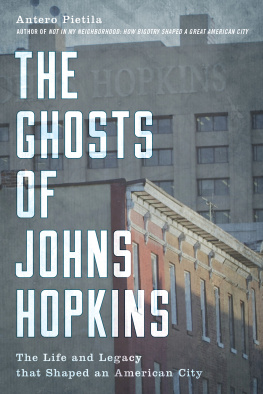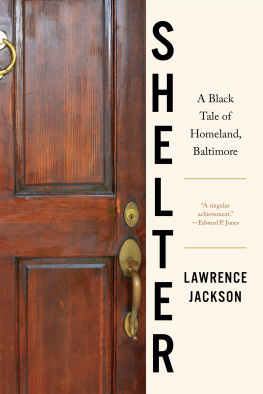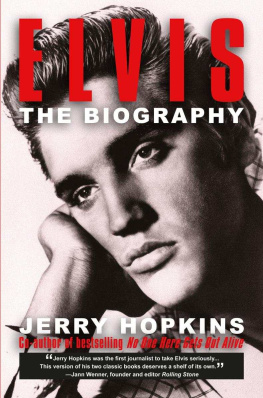The Ghosts of Johns Hopkins
The Ghosts of Johns Hopkins
The Life and Legacy that Shaped an American City
Antero Pietila
Rowman & Littlefield
Lanham Boulder New York London
Published by Rowman & Littlefield
An imprint of The Rowman & Littlefield Publishing Group, Inc.
4501 Forbes Boulevard, Suite 200, Lanham, Maryland 20706
www.rowman.com
Unit A, Whitacre Mews, 26-34 Stannary Street, London SE11 4AB
Distributed by NATIONAL BOOK NETWORK
Copyright 2018 by Antero Pietila
All rights reserved . No part of this book may be reproduced in any form or by any electronic or mechanical means, including information storage and retrieval systems, without written permission from the publisher, except by a reviewer who may quote passages in a review.
British Library Cataloguing in Publication Information Available
Library of Congress Cataloging-in-Publication Data Available
978-1-5381-1603-6 (hardcover)
978-1-5381-1604-3 (e-book)
 The paper used in this publication meets the minimum requirements of American National Standard for Information SciencesPermanence of Paper for Printed Library Materials, ANSI/NISO Z39.48-1992.
The paper used in this publication meets the minimum requirements of American National Standard for Information SciencesPermanence of Paper for Printed Library Materials, ANSI/NISO Z39.48-1992.
Printed in the United States of America
For Marva
Authors Note
My Baltimore Story Quilt
Johns Hopkins destroyed his private papers so thoroughly that no real biography exists of the Baltimore Quaker titan. The Ghosts of Johns Hopkins uses scraps of history to quilt a fully documented reconstruction of the magnates life and career as a railroad tycoon, venture capitalist, and merchant in the times of the Industrial Revolution, Americas westward movement, and the Civil War. It analyzes how his legacythe university, hospital, and medical schoolbecame the defining factors that they are today, the largest private-sector employers in the city and the state, with a robust worldwide reach.
My 2010 social history, Not in My Neighborhood: How Bigotry Shaped a Great American City , scrutinized real estate industry sales practices in the aftermath of Baltimores 1910 imposition of mandatory residential segregation, the first such law in the nation. This stand-alone companion volume follows ethnic and class rotations in The Basin (todays Inner Harbor), the city hall area, and the east side home of Hopkins Hospital. It tells the stories of the Germans, Irish, Jews, Bohemians, Poles, and Italians who passed through before the African American influx, which is described in detail. The narrative errs on the side of readability and will not overdose the reader with irrelevant minutia or an excessive listing of the cast of characters.
The book consists of three parts. The Pragmatic Opportunist explores Johns Hopkinss family origins, his religious and racial beliefs, and how he operated his businesses, becoming one of Americas wealthiest men. It scrutinizes his peculiar role in the Civil War, and discusses how his health problems inspired him to create his educational and medical legacies, and the challenges those institutions faced. One chapter examines how medical schools acquired cadavers for dissection. The chapter title says it allDoctors Rob Graves.
The second part deals with The Racial Dynamics of Modern Baltimore and the role of Daniel Coit Gilman, the first Hopkins president, in their creation. The city took initial steps toward formal segregation in 1899, when it set in motion the first Negro removal. Thousands of blacks were evicted from their homes around city hall in the name of municipal rebuilding, along with the communitys most important institutions: schools, churches, the Afro-American newspaper, Masonic halls, and lawyers and doctors offices. Strivers headed for the west side, where they replaced white Christians and coexisted with Jews; ordinary folk ended up on the east side, where Hopkins Hospital had opened a decade earlier. These events created the racial dynamics that continue to this day.
The third part, Pushing Out the Lumpenproletariat, discusses Hopkins Hospitals crisis in the 1960s, after the neighborhood became black. In the middle of menial employees unionization drive, the hospital and medical school contemplated moving out of the Broadway campus altogether. A hostile black community, constantly reminded of past expansion, limits future enlargement of the site, a 1970 assessment stated. The characteristics of the neighborhood make the area uncongenial for employees, staff and students. The move never happened. Instead, Hopkins adopted a diversification strategy that led to partnerships and acquisitions of other hospitals. It also diverted routine patients away from the hospital on Broadway so that doctors there could concentrate on medically challenging cases. I document the giant demolition and rebuilding effort that, after several ethnic and class rotations, is reconstituting the hospital area.
A main goal of this book is to help the reader understand the idiosyncrasies and complexities of Baltimore, the closest real American city to Washington and therefore a place where foreign media keep flocking. I branch out far beyond Hopkins. I tell the story of 1950s nightlife and organized crime, including a time when the city police commissioner was in the pocket of the Mob. All this is relevant. Later, I delve deeper into the corruption in the police department. Such reconstructions help put todays headlines in perspective. I tell the stories of Federal Hill, Fells Point and Canton, examine the longtime mayor and governor William Donald Schaefer and profile his successors, Clarence Du Burns, the citys first African American mayor, and Kurt L. Schmoke. I dissect various social activist movements and show that neighborhoods do not belong to any specific ethnic group, race, religion, or class. Instead, they are living organisms, mutated over time by economic, social, and political forces.
The Hopkins legacy straddles two realities. His pathfinding First World institutions are islands of excellence in a city that rewards mediocrity and increasingly exhibits Third World dysfunctions. Killing and drug addiction are out of control, bureaucracies are faltering amid corruption and falling tax revenues, and kids drop out of school, or are graduated without being able to read or write.
Life in The Sun
I first saw Americas shores in May 1964 from the deck of the MS Finntrader . I was a twenty-year-old aspiring journalist from Finland, wanting so badly to spend that summer in the United Statesthe summer of Lyndon B. Johnsons reelection campaign, civil rights strife, and of the New York Worlds Fairthat I worked my way across on freighters. I came from a country so homogeneous that eye and hair color marked the chief differences among its four and a half million people. No blacks lived in Finland in those days, and only fifteen hundred Jews.
New Yorks polyglot metropolis stunned me. While reporting one day in Harlem, I found myself naked and sweating in an old Finnish steam bath operated by an immigrant from Jamaica. It had been a popular gathering spot among residents of the Finnish community, which thrived in Harlem from the 1910s until the 1950s. Few traces of that population of several thousand survived. Rival socialist halls, including one with an indoor swimming pool and bowling alley, were long gone, as were Finnish churches. One vestige still remaining was a hat shop on 125th Street belonging to an elderly Finnish woman, who had stayed after other whites ran. Another relic was the steam bath, with its black owner, a professional masseur, at Madison Avenue and 122nd Street. Among the thinning ranks of his Finnish customers was an Olympic gold medalist.
The phenomenon of changing neighborhoods fascinated me. In 1969, after receiving my MA degree in journalism from Southern Illinois University-Carbondale, I found an urban observatory in Baltimore, a declining but still-great city trying to recover from the 1968 riots that followed the assassination of the Reverend Martin Luther King Jr. The city was in a defeatist funk. Racial tensions flared, white flight to the suburbs continued; smokestack industries kept shutting down. I witnessed civil rights protests, reported on two Ku Klux Klan cross burnings, covered school desegregation, antiwar actions, religion, community organizing, city hall, and Baltimore County, a separate jurisdiction that was overtaking the city. I even joined a ragtag army of mercenaries that the Congress of Racial Equality was recruiting for a civil war in Angola. I never quite figured out what COREs motive was in this effort that quickly flopped. My black fellow recruits, though, had a clear game plan. Once in Africa, they confided, they would frag the officers and loot diamond mines.
Next page







 The paper used in this publication meets the minimum requirements of American National Standard for Information SciencesPermanence of Paper for Printed Library Materials, ANSI/NISO Z39.48-1992.
The paper used in this publication meets the minimum requirements of American National Standard for Information SciencesPermanence of Paper for Printed Library Materials, ANSI/NISO Z39.48-1992.